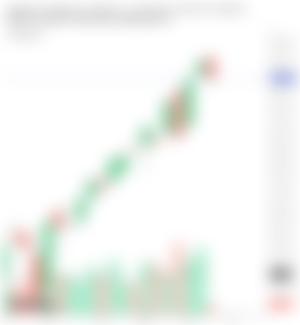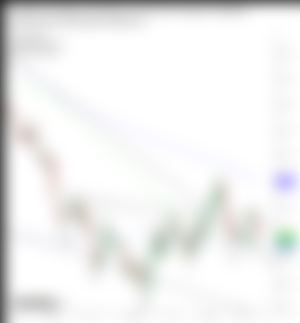The value sectors went well throughout the week
It bears almost annual peak, now stocks and gold compete
Bitcoin reaches more than $ 1 trillion in market estimates
Oil slips are less than $ 60 when cleaning supplies start to come back online
Treasury yields hit its highest level since February 2020 on Friday and U.S. stocks ended a mixed trading week as investors expressed doubts about the effects of inflation on the currency and gold. That feeling will continue to creep into the new trading church.
Oil slipped below $ 60 a barrel at the end of the trading week, as the US product began to return online.

Risk-Tolerance Increases; Gems Sold
The S&P 500 index was the only American high rating closed in red, (-0.2%) on Friday. Traders are beginning to worry that rising productivity could give rise to competition in the stock market. With almost zero interest rates operating last year, not making a profit, some of the demand for shares has arisen for traditional farmers. Even savings investors are forced to increase their exposure as the US stock market continues to grow in value.
Now, with a growing yield, the chances that the Fed will start to reduce its purchasing power, reduce its monetary policy, are starting to increase. This move to reduce spending has been pushing stocks beyond what some - including us - believe is reasonable.
Four categories passed on Friday: Construction materials, (+ 1.8%), energy, (+ 1.7%), industrial (+ 1.6%) and finance (+ 1.2%), paint a clear picture of reflation trading, in which stock prices are delayed. all lockdowns have now received their complaint again. The four are the same and are the only green sectors each week, with Energy (+ 3.4%) leading, followed by Financials (+ 2.8%), Materials (+ 1%) and Industrials (+ 0.75%) below .
Also, before the weekend, when th

e NASDAQ Composite added just 0.07% of its value, the small cap Russel 2000 - which has local listed firms promoted by reflation trading - rose by 2.05%.
While all four major US indexes set high records last week, with the exception of the Dow Jones Industrial A average, all closed are low. Technically, even Dow’s weekly trading has produced a high wave candlestick, indicating confusion and fear, an attitude of investors that makes the situation mature to go backwards.
The NASDAQ Composite looks very bad.
Dow WeeklyDow Weekly
The tech-heavy index is more open but closed less than last week’s real body - the price range between opening and closing - forms Dark Cloud Cover: bears put down their cards, but bulls have a better hand. Silver lining that the long, red candle was under volume, suggesting that the selloff could be carried out with a wide range of participation and therefore does not represent this trend.
New stock market records come with ongoing discussions of other legislators in Washington that kept the possibility of more financial assistance in the media cycle, including the high hopes already being driven by ongoing vaccine releases and economic data that show the economy somewhat.
Retail sales last week showed a 5.3% growth in consumer spending in January on a MoM basis, the strongest figure since falling and almost three times the growth in the past two months. This increase is likely to be a combination of simple money from previous government reforms and the use of consumer assistance funds after a lock ban. (The renewed lock for some regions in February will be reflected in the next release).
This data is important for two reasons: First, consumer spending accounts for a 70% increase in economic transactions, which - in the Keynnesia economy - is a measure of economic outflow; and second, it helps to understand current inflation, which responds to inflation expectations, as investors drop current notes to save money on future problems and what they expect to be higher yields.
UST 10Y Weekly
Fruits, including a 10-year stand note, developed in the third straight week, increasing by 13 points, which is a great gain every week for six weeks. Prices closed at the highest level as of February 25, 2020. Fruits were very high but pressed down by the WMA 100 and by July 2016.
The dollar fell on Friday and Tuesday, although yields rose at the same time. The two often have a good reunion, which seems to be broken.
DailyDollar Dollar Daily
The dollar is stuck between 100 and 50 DMA, as the price struggles to find a direction. The greenback finished off the H&S but fell back below the neckline. Note, the price fluctuates between our definition of a neckline (a strong trendline) and another trendline (a dotted line). For now, however, the price seems to have received support above the falling line from the top in March.
The two-day sale of dollars was not enough to raise gold, and to bring it back to the rally.
Gold DailyGold Daily
Instead, the yellow metal sharpened at the top, weakly. Note the two raised candlesticks, indicating that traders were drawn on both sides: the weaker dollar raised gold, while yields yielded investors from one safe asset to another, which served as a storm. The precious metal registered the vessel lower than the one fitted on November 30. However, a higher closure could indicate a reversal.
However, consider that the price action took place within the collapsed channel, and moreover, 100 DMA dipped below 200 DMA, completing the formation of the bearish MA, where each short-range movement is less than its long counterparts. Finally, the last piece of the puzzle in our bearish look is that the price has achieved just over half of the stated rate of the rising flag made in January.
Bitcoin, it seems, is on the fast track, one way

